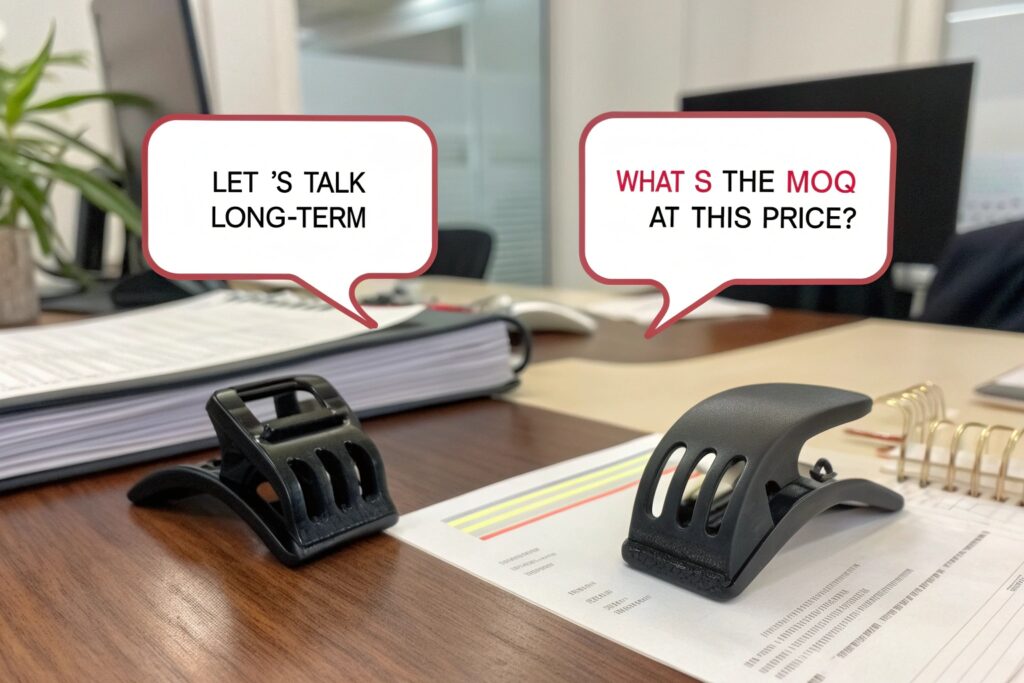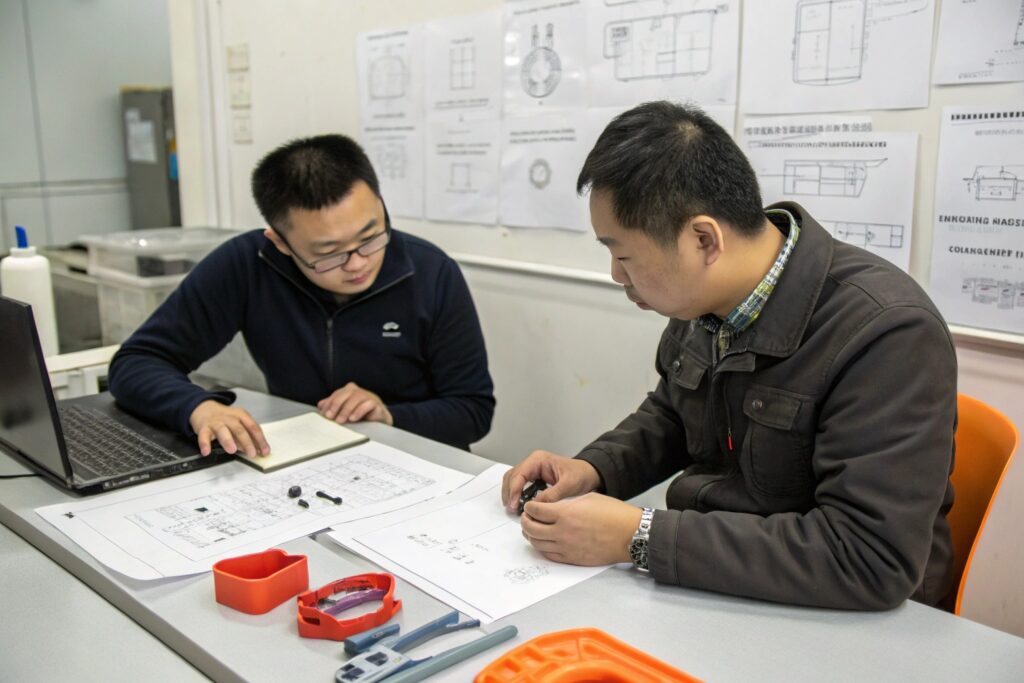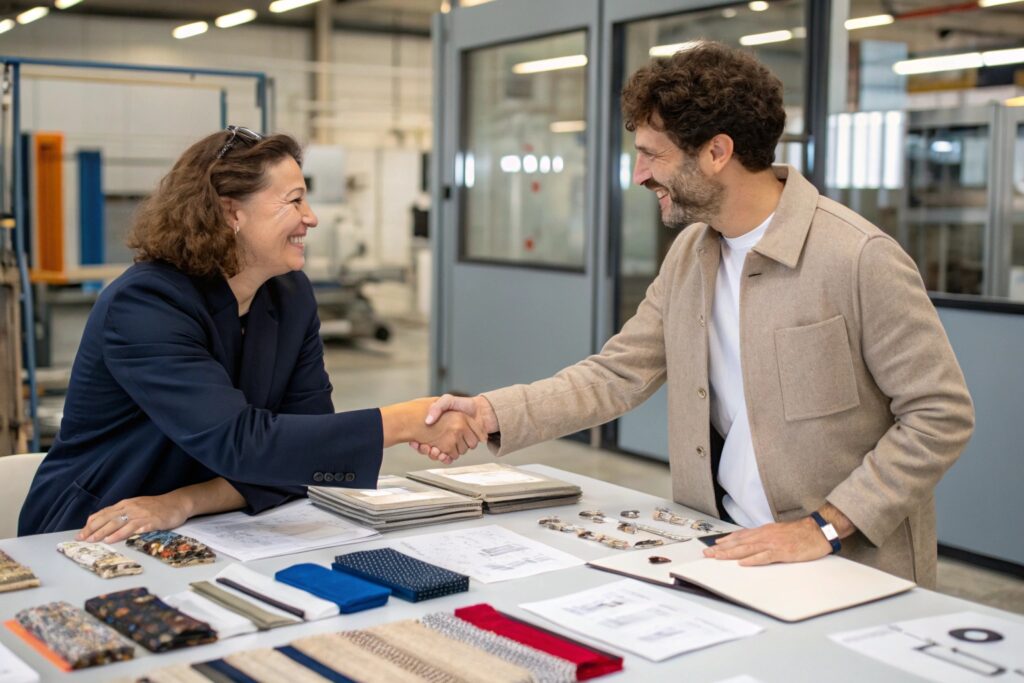E-commerce margins are thin. When claw clip suppliers quote high, your profits suffer. If you're serious about scaling, you must learn how to negotiate better.
To negotiate efficient pricing with a claw clip manufacturer, you must combine volume clarity, cost breakdowns, lead time flexibility, and relationship building to create a win-win deal.
Without negotiation, you’ll either overpay or get low-quality products. As a factory owner myself, I’ve seen both sides. The best partnerships are built on smart pricing conversations—not price pressure.
How to negotiate for better pricing with suppliers?
Suppliers often quote high first, expecting you to push back. But many buyers just accept the offer or ghost the vendor. That’s a missed opportunity.
You can get better prices from claw clip suppliers by understanding cost drivers, asking the right questions, and positioning yourself as a long-term partner—not just a bargain hunter.

What Questions Should You Ask to Reduce Price?
Before haggling, ask for details:
- What’s the cost of raw materials vs. labor?
- How does order volume change per-unit pricing?
- Can we adjust packaging or material to save cost?
- Are there seasonal production discounts?
Instead of saying “this is too expensive,” try:
“If we reorder 5,000 pcs every quarter, can we bring this to $0.32 per unit?”
This shows you're serious and opens the door for negotiation.
| Negotiation Lever | Impact | Notes |
|---|---|---|
| Volume Commitment | High | Better if tied to a schedule |
| Packaging Simplification | Medium | Use generic polybags instead of box |
| Material Substitution | Medium-High | Swap acetate with ABS or plastic |
| Payment Terms | Low-Medium | Upfront payment may reduce unit cost |
Why Relationship Is Your Secret Weapon?
Suppliers don’t always offer the best to everyone. But if they know you're reliable, they’ll give you priority. At HairAcc, we offer better terms to clients who:
- Confirm fast
- Communicate clearly
- Pay on time
Our longest clients didn’t start with the lowest prices—but they got there.
What is the best way to negotiate price?
You can negotiate in many ways—but not all are effective. Many buyers either lowball aggressively or ask vague questions. That usually leads to frustration.
The best way to negotiate claw clip pricing is to prepare data, understand your leverage, present your demand professionally, and show long-term potential.

How to Structure the Price Conversation?
Start by laying your cards on the table:
- Show that you’ve done your homework.
- Give a reference price based on market or prior orders.
- Ask for flexibility based on order structure.
Here’s a sample script:
“We’re comparing 3 vendors. You’re at $0.42, others are at $0.37, but we like your quality more. If we can place 10,000 units over 2 months, could you meet us at $0.38?”
Notice how this avoids confrontation and offers a path to compromise.
What Mistakes to Avoid?
- Don’t Lie: If you pretend to have fake offers, we often know.
- Don’t Threaten: Ultimatums close doors.
- Don’t Be Vague: “Give me a better price” is too open-ended.
Instead, be specific and respectful. Good suppliers appreciate clarity.
How to negotiate equipment prices?
Though not common in hair accessory trade, some buyers request tooling, molds, or production equipment—especially for custom shapes or branded molds.
To negotiate equipment or mold costs, focus on amortization options, shared rights, and usage terms to reduce upfront expenses.

When Should You Pay for Tooling?
If you're creating a custom claw clip shape, a mold may be required. At HairAcc, mold costs range from $300–$800 depending on complexity. You should pay only if:
- The mold is unique to your brand.
- You want shape exclusivity.
- You’re placing repeated orders.
Here are common tooling scenarios:
| Mold Type | Typical Cost | Buyer Ownership | Notes |
|---|---|---|---|
| Shared Design Mold | $0–$200 | No | Other buyers may use it |
| Semi-Custom Mold | $300–$500 | Shared/Exclusive | Minor shape tweaks |
| Fully Custom Mold | $600–$800 | Yes | Designed for brand exclusivity |
How to Reduce Upfront Mold Fees?
- Negotiate amortization: “Can we deduct $0.03 per piece until it’s paid off?”
- Request co-funding: “Can we split this cost since the shape may be reused?”
- Ask for rebate: “If we order 20,000 pcs, can you refund the tooling cost?”
We’ve done all of these for long-term clients. Equipment should never be a roadblock—it should be a joint investment.
How do you negotiate with vendors with an example?
Let’s take a real example from our past client, Ron—a U.S. e-commerce store owner.
To negotiate effectively, use data-backed arguments, order structure, and relationship cues. Ron's case shows how that leads to efficient pricing and better service.

What Did Ron Do Right?
-
Step 1: Prepared his data
- He listed his target price based on other quotes.
- He broke down the order into phases (test + repeat).
-
Step 2: Pitched long-term value
- He told us he’d repeat the order if it sold well.
- He was clear he wanted one supplier—not jumping around.
-
Step 3: Asked for more than price
- He requested help with Amazon FBA barcodes.
- He asked for faster sampling on his second variant.
This was Ron’s quote request:
“We love your shell-style claw clip. We’d like to place 2,000 pcs first and 8,000 pcs more if sales go well. Can you offer a better rate if we confirm both batches together?”
| Item | Initial Quote | Final Price | Why It Dropped |
|---|---|---|---|
| Shell Claw Clip | $0.40 | $0.36 | Committed to two batches |
| Custom Packaging | $0.15 | $0.10 | Removed window box |
| FBA Prep | $0.08 | $0.05 | Added into base quote |
Why Examples Like This Matter?
Real-world negotiations show what works:
- Price isn’t just numbers—it’s about trust, volume, and timing.
- Clarity leads to better offers.
- Vendors like us want long-term partners, not just price hunters.
Conclusion
Getting better pricing from a claw clip manufacturer doesn’t require aggressive tactics. It takes strategy, empathy, and clarity. Build a relationship, speak in numbers, and always aim for win-win deals. That’s how real sourcing power is built.









